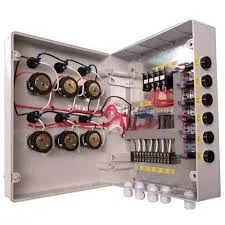Understanding Flame Retardant Tapes Features, Applications, and Benefits
Flame retardant tapes are specialized adhesive tapes designed to resist combustion and prevent the spread of flames. These tapes play a critical role in various industries where fire safety is paramount. Whether in construction, automotive, electronics, or aerospace, flame retardant tapes are essential for enhancing fire safety and compliance with stringent regulations.
Features of Flame Retardant Tapes
Flame retardant tapes are made from materials specifically engineered to withstand high temperatures and resist ignition. Common materials include polyimide, fiberglass, and PVC, all of which can be treated with flame retardant chemicals. Key features of these tapes include
1. Heat Resistance Flame retardant tapes can endure high temperatures without degrading, making them suitable for applications in high-heat environments.
2. Low Smoke Emission In the event of a fire, these tapes emit minimal smoke, thus reducing the risk of additional hazards associated with smoke inhalation.
3. Adhesive Properties These tapes maintain strong adhesion to various surfaces, ensuring that they adhere securely under different conditions, including extreme temperatures and humidity.
4. Durability Designed to last, flame retardant tapes are often resistant to oils, chemicals, and UV light, providing longevity in challenging environments.
5. Flexibility The tapes can conform to irregular shapes and surfaces, making them versatile for diverse applications.
Applications of Flame Retardant Tapes
Flame retardant tapes have a broad spectrum of applications, primarily focused on fire prevention and safety. Here are some key areas where these tapes are utilized
1. Electrical Insulation In the electrical industry, flame retardant tapes are applied to insulate wires and cables, preventing electrical fires caused by overheating or short circuits.
2. Automotive Industry Automotive manufacturers utilize these tapes to secure wiring harnesses and components, protecting them from high temperatures and fires during vehicle operation.
flame retardant tapes

4. Construction In buildings, these tapes are applied to seal joints and gaps, adding an extra layer of fire protection to construction materials. They help prevent the spread of fire between compartments, keeping occupants safer.
5. Consumer Products Some consumer goods, particularly those that involve electrical components, utilize flame retardant tapes to ensure compliance with safety regulations.
Benefits of Using Flame Retardant Tapes
The use of flame retardant tapes provides numerous benefits beyond simple fire resistance
1. Enhanced Safety By incorporating flame retardant materials into projects, companies can significantly enhance safety for workers and consumers alike.
2. Regulatory Compliance Many industries are subject to strict fire safety regulations. Using flame retardant tapes can help ensure compliance and avoid potential legal issues.
3. Cost-Effectiveness The initial investment in flame retardant tapes can lead to significant savings over time by reducing potential fire damage, legal liabilities, and insurance costs.
4. Peace of Mind Implementing fire safety measures can provide a sense of security for both employees and customers, knowing that proactive steps have been taken to mitigate fire risks.
5. Versatility The broad range of applications means that flame retardant tapes can be used in diverse scenarios, from simple household projects to complex industrial manufacturing processes.
Conclusion
Flame retardant tapes are an indispensable component of modern safety practices across various industries. By offering heat resistance, durability, and excellent adhesive properties, these tapes help prevent fire hazards and ensure compliance with safety regulations. As businesses continue to prioritize safety and risk management, the role of flame retardant tapes is poised to grow, making them a vital consideration for any industry focused on fire safety and prevention. Understanding their features, applications, and benefits can empower organizations to enhance their safety protocols effectively.
-
XIANGFAN Rubber Tape-Ultimate Solutions for All Your Insulation NeedsNewsJun.24,2025
-
XIANGFAN Rubber Tape-Protection for Industrial and Residential ApplicationsNewsJun.24,2025
-
XIANGFAN Rubber Tape: Superior Safety and Sealing for Demanding EnvironmentsNewsJun.24,2025
-
XIANGFAN Rubber Tape: Reliable Solutions for Every Electrical ChallengeNewsJun.24,2025
-
XIANGFAN Electrical & Industrial Tape: Powering Reliability Across IndustriesNewsJun.24,2025
-
XIANGFAN Electrical & Industrial Tape: Excellence in Every ApplicationNewsJun.24,2025
